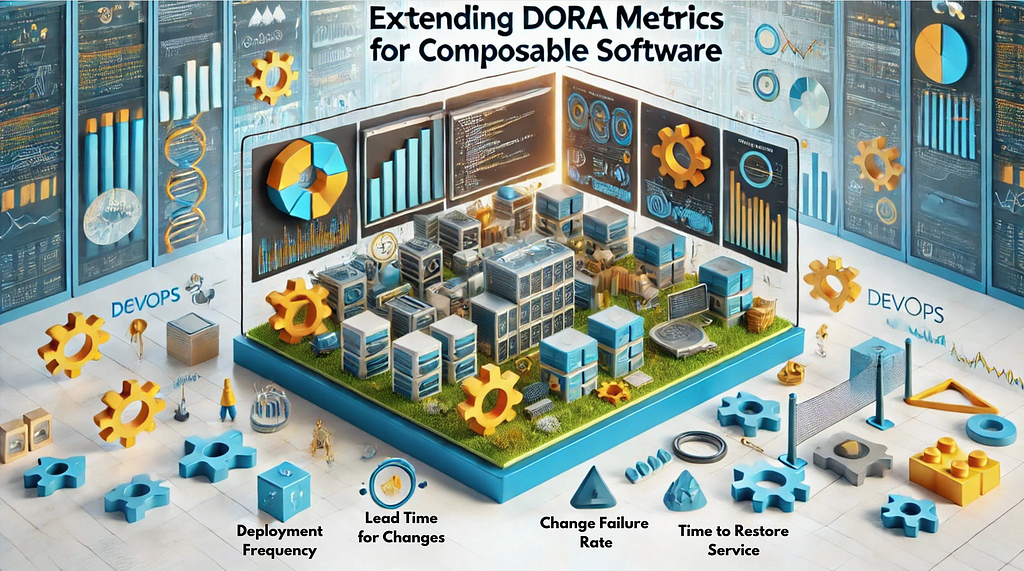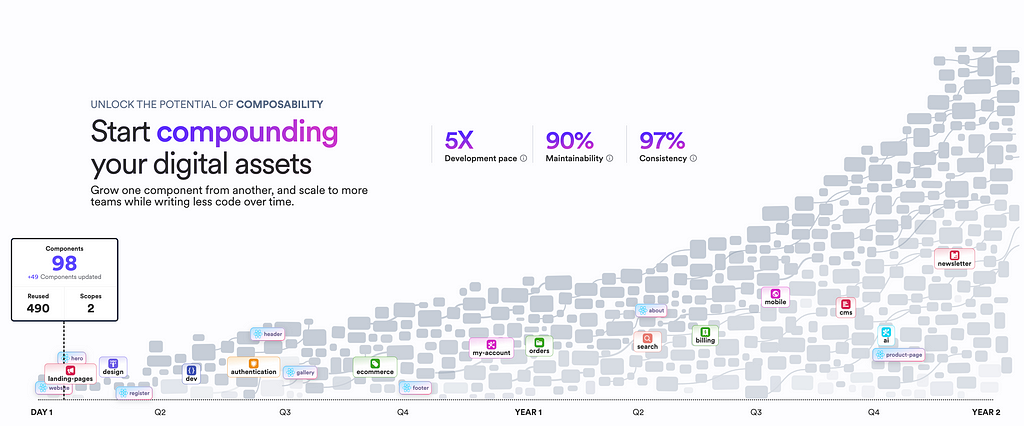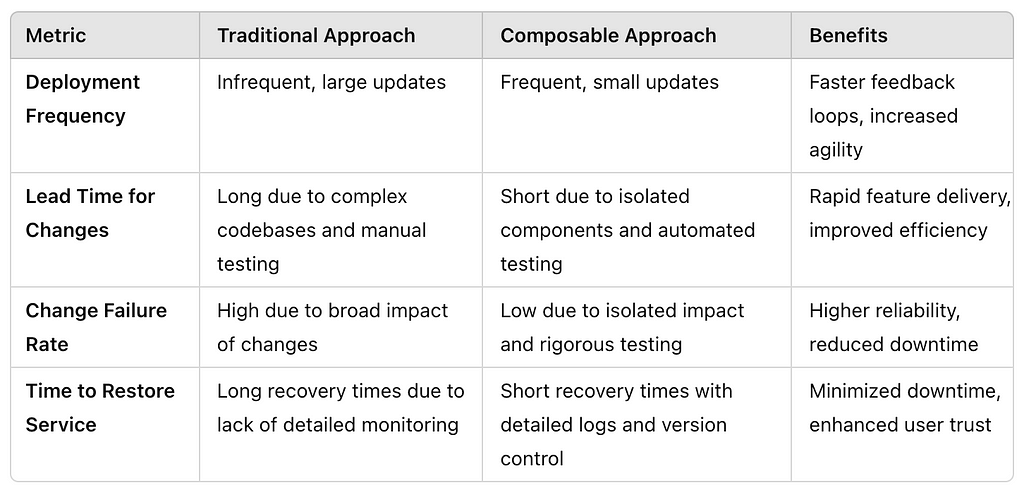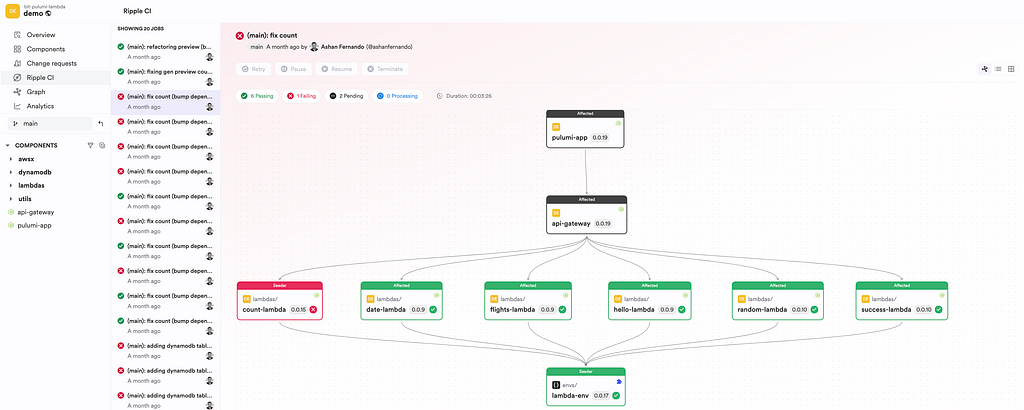This content originally appeared on Bits and Pieces - Medium and was authored by Ashan Fernando
Discover how extending DORA metrics for composable software architectures enhances DevOps in practice.

In the ever-changing software development landscape, developers and DevOps teams constantly seek ways to enhance their processes and deliver better software faster.
One of the most significant advancements in this realm is the concept of composable software architectures. These architectures, built from modular and reusable components, provide a robust framework for achieving these goals. Combined with DORA metrics, they offer a powerful toolset for optimizing DevOps performance to a new level.
Understanding Composable Software

Composable software architectures are similar to building with Lego blocks. Each block, or component, is a piece of the larger application, designed to be independently developed, tested, and deployed. This modularity brings unparalleled flexibility, allowing teams to quickly adapt to changes and scale their applications.
Imagine a bustling workshop where developers craft individual components like buttons, text boxes, and even backend logic. These components are meticulously designed to be interoperable, much like Lego pieces that fit together seamlessly. As these components are assembled, they form complex systems capable of evolving with the business's needs.
Overview of DORA Metrics
DevOps Research and Assessment (DORA) metrics provide a standard for measuring DevOps performance. These metrics focus on:
- Deployment Frequency: How often code is deployed.
- Lead Time for Changes: Time taken from code commit to deployment.
- Change Failure Rate: The percentage of deployments causing production failures.
- Time to Restore Service: The time taken to recover from a failure in production.
Extending these metrics in the context of composable software can yield significant benefits, leading to more agile, reliable, and efficient development processes.
Quick Comparison
Before exploring each metric in more detail, let’s summarize the benefits of extending DORA metrics through composable software architectures.

Faster Deployment Frequency
In a traditional monolithic architecture, deploying code can be cumbersome. Each deployment often involves updating large chunks of the application, which requires extensive testing and coordination. This can lead to infrequent deployments, slowing the feedback loop and delaying feature delivery.
Enter the world of composable architectures. By breaking down the application into smaller, independently deployable components, deployment frequency can be significantly increased. Each component, such as a payment processing module, can be updated and deployed without affecting the rest of the application. This approach accelerates the deployment process and reduces the risk associated with each deployment.
Imagine an e-commerce application where the payment processing module is a standalone component. When a change is made, it is immediately validated through automated tests and deployed without impacting the rest of the system. This modular approach enables the team to release updates daily, significantly enhancing their agility.
Improving Lead Time for Changes
Lead time for changes is a critical metric that reflects how quickly a team can move from code commit to deployment. Long lead times often result from complex codebases and manual testing processes.
Implementing a small feature enhancement in a legacy financial system might take weeks due to extensive manual testing and integration efforts. However, composable architectures isolate each feature or bug fix to a specific component. Automated tests are run on individual components, drastically reducing the time required for manual testing. Additionally, the system's modular nature means that only the necessary components are updated and tested by automatically looking at the component dependency chain, streamlining the complete integration process.

Consider a modern financial application where a new feature for loan processing is developed as a standalone component. Automated tests validate the component before it is integrated into the system, ensuring swift deployment. This approach reduces the lead time from days to hours, allowing the team to respond quickly to customer feedback and market trends.
The Quest to Lower Change Failure Rate
Change failure rate measures the percentage of deployments that cause production failures. It's vital to constantly monitor it to reduce the risk of failures, especially when frequent changes are made to a system.
With composable architectures, changes are isolated to individual components, making identifying and resolving issues easier. Each component undergoes rigorous testing in isolation and after integrating with the rest of the system, ensuring reliability before deployment.
If a failure occurs, it is quickly traced back to the specific component, minimizing the impact on the overall system. Using different versions of components also makes it possible to feature toggle or dark launch features. This approach significantly lowers the change failure rate, enhancing the platform’s stability and user experience.
Reducing Time to Restore Service
Restoring service after a failure can be time-consuming, especially without proper documentation or monitoring. Time to restore service measures how quickly a team can recover from a production failure.
Suppose an online education platform experiences a critical failure during peak usage hours, disrupting classes and causing frustration among students and instructors. Implementing robust monitoring and alerting helps quickly identify and resolve issues. Identifying the components responsible for the issue allows for easy rollback to previous stable component versions, ensuring rapid recovery.
Conclusion
Extending DORA metrics in the context of composable software involves leveraging these architectures' inherent modularity and flexibility. Platforms like Bit provide the tools and foundation for teams to implement the composable architecture in practice.
Thanks for reading. Cheers !!!
Learn More
- Composable Software Architectures are Trending: Here’s Why
- 5 Paradigm Shifts Driving Modern Digital Transformation
- Innersource Development: A Practical Guide
- React Micro Frontend: Why Composability Matter?
Extending DORA Metrics for Composable Software was originally published in Bits and Pieces on Medium, where people are continuing the conversation by highlighting and responding to this story.
This content originally appeared on Bits and Pieces - Medium and was authored by Ashan Fernando
Ashan Fernando | Sciencx (2024-07-08T12:00:50+00:00) Extending DORA Metrics for Composable Software. Retrieved from https://www.scien.cx/2024/07/08/extending-dora-metrics-for-composable-software/
Please log in to upload a file.
There are no updates yet.
Click the Upload button above to add an update.
